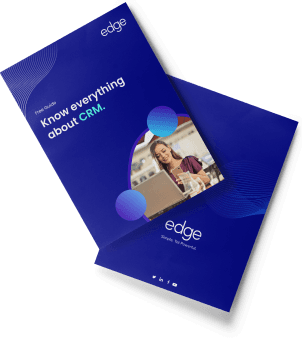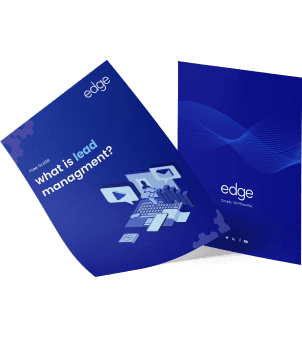An effective cold email campaign is difficult to achieve. Choosing which follow-up email templates to use after receiving no response is one of the most difficult challenges to overcome. So, you've created a B2B email list and begun sending cold emails. Some people respond right away, while others don't.
What's the best way to write a follow-up email that doesn't suck?
Is it necessary to follow up on your emails?
Yes, absolutely.
According to a study, sending just one follow-up can impact your response rates and increase them by 65.8%.
Many questions come to mind about creating and scheduling follow-ups for cold emails:
How many follow-ups should you send?
How often do you do it?
What are you going to write about?
We will try to answer the general questions marketers and salespeople have and provide detailed instructions on how to make an effective follow-up in this article.
When to Follow Up Emails after No Response
Wait for at most three days, and follow up if you haven't received an answer.
It will be too long if you wait a week. You will appear needy if you send an email on the same day as your first email. In your series, try sending two to three emails, and make sure that you never send a breakup email. Rather, leave the discussion open and come back to it later.
Let's overview some best practices for sending a follow-up email on that note.
Writing Follow Up Emails after No Response
Examine your initial attempt to see if you included a closure.
Resist the temptation to send your initial email again.
Don't send a follow-up email too soon.
Create a sincere subject line.
Begin the message by mentioning your most recent touchpoint.
Avoid being passive-aggressive in your first few sentences.
Keep the email's body as brief as feasible.
In the end, include a call-to-action.
If your prospect doesn't react to your initial email, you might assume to yourself, "Well, if they didn't respond the first time, then they're probably not interested in the product, so I should just ignore them."
Wrong.
A prospect's decision to ignore your email is influenced by several factors. It may not have been the proper time; they may have noticed it but failed to respond; your email may have gone lost in their inbox; they may not be interested currently, but they will be later if you stay in touch.
There are far too many reasons to do so. So, what's next for you? When sending a follow-up email after receiving no answer, follow these guidelines. If you follow their advice, you'll be more likely to reclaim a few of those wandering possibilities.
1. Examine your initial attempt to see if you included a closure.
To begin, consider whether you included a closure in your initial try. Salespeople frequently soften their initial follow-up emails in order to elicit a reaction. "I would love hearing back from you" or "I'd like to learn more about what you do" is thrown in for good measure.
The issue is that these aren't inquiries, and none of them request a conclusion. Closing isn't only about whether or not they'll sign the contract. A close should be included in every interaction you have with a prospect, from the initial outreach to the final documentation. Every time you contact your prospect, whether it's for additional five minutes of their time, a discovery call, or a demo, you should have a purpose and a call-to-action.
As a result, rather than making an uncertain comment like, "I believe I can be of great use to you. I'm hoping we'll be able to catch up soon." make sure your prospect has a chance to answer. Include solid questions like "Are you available for a demo on Friday?" or "Can you return all feedback on the initial proposal by Tuesday?" and offer your prospect a specific request to react to.
2. Resist the temptation to send your initial email again.
Never copy and paste the original email or forward it. It may appear to be empowering, but all it accomplishes is to send the message to your prospect that you're making them feel bad for not responding. From a practical sense, this exposes your emails to being filtered as spam or completely blocked.
Handle each follow-up email as if it were a new one. Experiment with different subject lines, greetings, and calls to action. You never know what may eventually compel your prospect to respond, so why restrict yourself to a single email thread that now contains nine outmoded messages?
3. Don't send a follow-up email too soon.
Persistence is a term used by salespeople to describe themselves. Persistence is one of our calling cards and a part of our personality, but when it comes to following up, it might start to resemble pestering.
Persistence without understanding why the prospect isn't reacting isn't a good idea. You're not giving them enough time to answer if you merely follow up with them a day or two after the initial outreach email.
Worse, it sends the message to your prospect that you aren't as busy as you claim — and no one wants to engage with a desperate salesman. Between your first and second follow-up attempts, wait at least three days. Then, and only then, you must increase the frequency of your outreach.
4. Create a sincere subject line.
You might be enticed to "embellish" your subject line, but don't. When you use subject lines like "Re: Our meeting last week" or "Following up on our phone call," you're lying, and it's always a poor idea.
Don't try to persuade your prospect to open and respond to your emails out of bewilderment. Maintain a positive, straightforward, and concise tone in your subject lines. Consider something like this:
"Bumping this in your inbox": This informs them that you've already sent an email and are writing another message in case they didn't receive the first.
"Resources list for [company name]": This is another excellent option for piquing your prospect's interest in what they might discover inside.
"Following up after the demonstration last week": If you've already done a demo with the prospect, this is a no-brainer.
5. Begin the message by mentioning your most recent touchpoint.
Sending a second email without indicating you've previously communicated is in poor taste, just as lying to your prospect is. If you're really close to the possibility — for example, if you're childhood pals — this could work. (It's unlikely, but it's possible.)
You and your prospect are unlikely to interact frequently enough for them to remember you. Or they may recall you but require a refresher on why you're contacting them again. It does not have to be as straightforward as "This is a follow-up to an email I sent last week to you" or as impersonal as "I'm contacting you again after a failed attempt a couple of days ago to get in touch with you."
These sentences can come out as clumsy and even accusatory. They give the impression that the prospect purposefully ignored your email. Maybe they did, but there are a variety of reasons for this, including the fact that they were busy when they first saw your email.
Simple, basic reminders that make you appear friendly and eager to deliver more value are a good place to start. The opener should likewise be brief, reminding your prospect of the call-to-action you provided in your prior communication. Some instances are as follows:
"I hope you're doing well." Have you read the [articles, materials, and links] I sent you last week?"
"I hope you're having a wonderful week so far. Have you had a chance to review the contract I emailed you on [date]?"
"I hope you're having fun with the product samples thus far." Last week, I wrote an email to you to get your temperature on the samples, and I'm moving this to the top of your inbox."
6. Avoid being passive-aggressive in your first few sentences.
After sending one or two emails and not getting a response, some people might take it personally. Salespeople need to be tougher than that. "I've tried to reach you a couple of times now," or "I understand you're occupied, I'm busy as well," aren't going to help you close the business.
In the best situation, you persuade your intended recipient to respond to your communication. You will, in the worst-case situation, offend and alienate them. Keep your tone positive if you've contacted out on a few occasions and haven't gotten a response.
If you're not sure, assume good intentions. "Just wanted to touch base on this," or "Just wanted to bump this email to the top of your inbox," quietly acknowledge that your prospect is busy and may only want a slight push to start things rolling again.
However, if you are still struggling to understand and implement the right tone, then we suggest that you leverage the paraphrasing tool for an automated workaround for your message.
7. Keep the email's body as brief as feasible.
Only a few bullet points or paragraphs should be included in a follow-up email. Remember, your prospect has already received your first email, so keep it to no more than 2-3 paragraphs. Your second email should be a compliment to the first, not an overload of material that will make it hard for your prospect to respond. Hence, it’s recommended to use an AI text summarizer, which can quickly condense your message and make it compelling for the recipient.
Those with a shorter copy (about 95 words) beat emails with longer material, according to Sleeknote (around 170 words). In fact, emails that were shorter had a 5.81 percent CTR.
Try avoiding superfluous welcomes like "I hope you are doing good" in your follow-up emails. Being polite is necessary, but it may be simply accomplished by utilizing the appropriate email style.
Also, avoid using long sentences. Remove words from your writing that drag it down and make you sound unsure. In the follow-up email's body -
Provide further value to the prospect.
Make it evident how the prospect will benefit from continuing to work with you.
Make it impossible not to respond to your call to action.
Let's talk about calls-to-action on that note.
8. At the end, include a call-to-action.
When sending a follow-up email to a cold lead, you should be very specific about what you want to accomplish.
Consider the following scenario: You get a similar follow-up to an email you didn't have time to open:
"What does this person require from me?" is the first inquiry you should ask yourself. No context, personalization, or call-to-action are present. How do you know what to do even if you read the context from the preceding email
When it comes to follow-up, a call-to-action is crucial. It's quite unlikely that your prospect will take action unless you provide them with the following actions.
9. Make responding easy for your prospect.
If you're planning a meeting, for example, provide a precise time and date: "Does 4:20 PM on Monday work for you?"
If you're trying to get others to connect to your information, you may pose an open question like, "Would you be interested in linking to our guide?"
Ask, "Are you the perfect person to talk about this? If not, could you send me in the appropriate direction if that's not the case?" if you want to find the appropriate person in the firm to discuss a given topic.
Many cold emails lack or have a confusing call-to-action, wasting the prospect's time. Make your call to action clear, convincing, and difficult to ignore. Tell your potential customers exactly what you want them to do.
One thing to keep in mind: the call-to-action in your second email should never be exactly like the ones in your first. Your prospect has most likely already seen the first email, and the call-to-action may have been too much for them at the time. Adjust your closing to increase your chances of getting a response.
10. Sending a breakup email is not a good idea.
Sending a breakup email is never a good idea. Stop sending prospect emails if you've tried these measures. Remove yourself from the situation, wait a few months, and then return.
There's an ancient sales adage that says salespeople shouldn't declare their intentions. You've made your prospect feel horrible, made yourself look like a victim, and lessened the likelihood of them reaching out to you again if you send an irritated email after your fifth follow-up saying, "Well, since I have not heard from you, I will assume you're not interested."
You have given yourself a position of authority by not saying anything at all and reaching out again after a few months have passed, and you've avoided passive-aggressively criticizing your prospect for not replying. Follow up with a warm, polite message. "I wish you a wonderful summer! Going into the fall months, I know a lot of clients are focused on [benefit your product/service delivers]. Is this a current priority for your company?"
11. Wrap up
It's a difficult task to get someone's attention who hasn't responded to you in the past.
As a result, instead of assaulting your prospects with too many follow-ups, focus on creating value and making tempting offers when writing your follow-ups.
To get your leads to read your mails, write a compelling beginning line, keep the email short to avoid losing their interest, and do your research to tailor follow-ups.
If you follow these easy guidelines, you'll definitely be able to get a response from your prospects.













